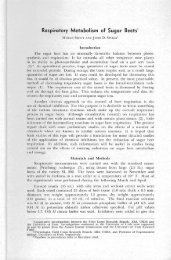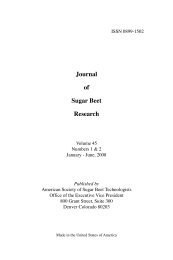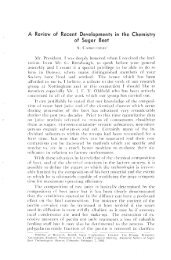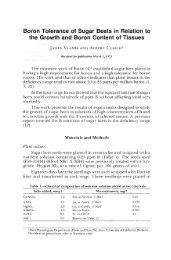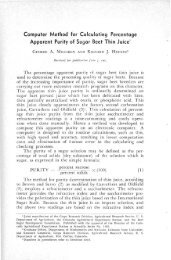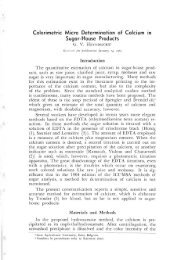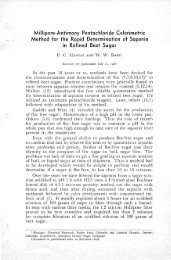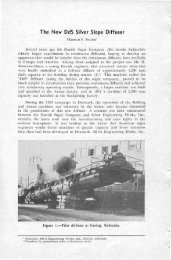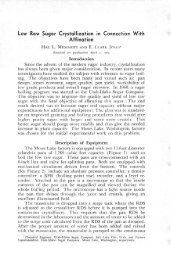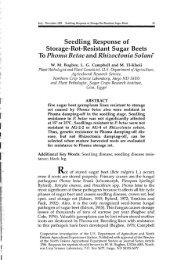Habit Modification of Sucrose Crystals A Lecture - Vol
Habit Modification of Sucrose Crystals A Lecture - Vol
Habit Modification of Sucrose Crystals A Lecture - Vol
Create successful ePaper yourself
Turn your PDF publications into a flip-book with our unique Google optimized e-Paper software.
VOL. 22, NO. I, APRIL 1983<br />
since 1966. This especially has served to focus attention<br />
on the subject and one <strong>of</strong> the purpose <strong>of</strong> the present dis<br />
course will be to mention what the writer considers some<br />
<strong>of</strong> the major unsolved problems in the field.<br />
At the factory level such matters are important be<br />
cause habit modifications frequently occur when growth<br />
rates are impeded by impurities; which same impurities may<br />
enhance viscosity with its problems. Altered shapes behave<br />
awkwardly in purging and packaging and such factors inter<br />
rupt normal smooth production and thus shape as well as<br />
size becomes important.<br />
CLASSIFICATION<br />
While most <strong>of</strong> the crystals in any particular strike<br />
may look alike, aside from differences in size, there are<br />
usually individuals which appear to differ in being dis<br />
proportinately elongated, thinner, etc. The properties <strong>of</strong><br />
such irregularities may differ considerably in repeated<br />
trials and when excessive create a problem for the sugar<br />
boiler. In addition he must be on the watch for conglome<br />
rates and twin formations as well as eroded and fragmented<br />
crystals. These are separate but related problems but<br />
will not be considered here. Neither will the formation<br />
<strong>of</strong> dendrites, spherulites, rosettes, etc. These are met<br />
more frequently in laboratory work and have been described<br />
in great detail by Powers (25) in a series <strong>of</strong> communica<br />
tions.<br />
Aside from this, Vavrinecz classifies single sucrose<br />
crystals morphologically as follows:<br />
A. Simple or normal <strong>of</strong> stout-prismatic form.<br />
B. Needles, elongated along the b-axis.<br />
C. Those elongated along C.<br />
D. Platelets on a, (100)<br />
E. on c, (001)<br />
F. on d, (101)<br />
G. on r, (101)<br />
H. Biphenods<br />
I. Triangles and pentangular shapes.<br />
Most <strong>of</strong> the examples illustrated in his Atlas were se<br />
61



